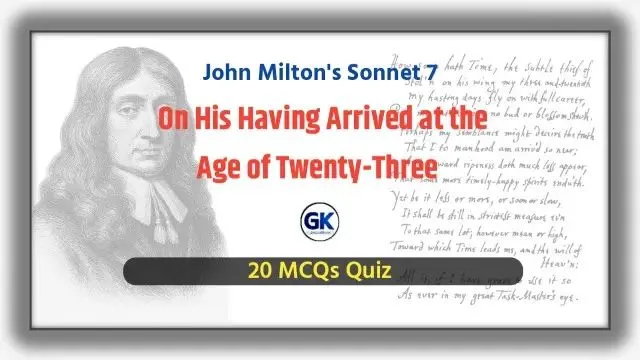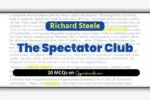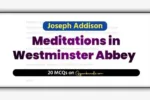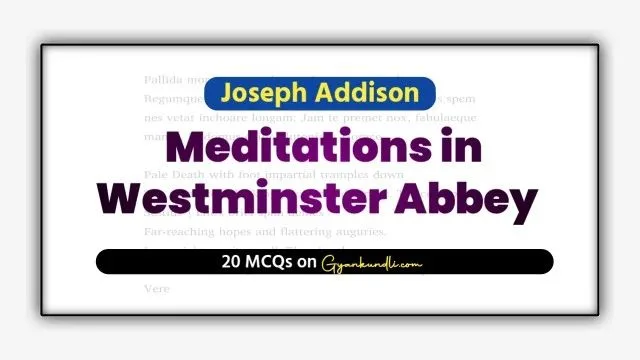On His Having Arrived at the Age of Twenty-Three MCQ Quiz : John Milton’s Sonnet 7, also known as “On His Having Arrived at the Age of Twenty-Three”, is one of his early poems written around 1631-32. In this poem, Milton expresses his deep concern about the slow growth of his talent and his fear that time is passing too quickly. He feels that at the age of twenty-three, he has not yet achieved enough in life or fulfilled his poetic potential. However, by the end of the sonnet, his faith in God’s divine plan brings him comfort and peace.
The poem begins with the famous line, “How soon hath Time, the subtle thief of youth,” in which Milton personifies Time as a thief who steals away youth silently. He feels that although his physical age has reached manhood, his inner maturity and outward appearance still seem young. This creates a sense of disappointment in him, as he has not yet achieved anything remarkable.
Milton compares his life to a “late spring” that shows “no bud or blossom,” symbolizing unfulfilled potential. He wonders why his abilities are still dormant when he is so close to manhood. However, his thoughts change in the second half of the sonnet. He reminds himself that human life and progress are guided by God’s will. If he continues to serve God faithfully, then whatever task God has planned for him will come to fruition at the right time.
By the end, Milton surrenders his worries to divine providence, realizing that spiritual obedience is more important than worldly success. This faith marks the maturity of his thought, showing his calm acceptance of God’s timing.
Text of On His Having Arrived at the Age of Twenty-Three
How soon hath Time, the subtle thief of youth,
Stol’n on his wing my three-and-twentieth year!
My hasting days fly on with full career,
But my late spring no bud or blossom shew’th.
Perhaps my semblance might deceive the truth
That I to manhood am arriv’d so near;
And inward ripeness doth much less appear,
That some more timely-happy spirits endu’th.
Yet be it less or more, or soon or slow,
It shall be still in strictest measure ev’n
To that same lot, however mean or high
Toward which Time leads me, and the will of Heav’n:
All is, if I have grace to use it so
As ever in my great Task-Master’s eye.
Form of On His Having Arrived at the Age of Twenty-Three
Sonnet 7 follows the structure of a Petrarchan (Italian) Sonnet, which consists of 14 lines divided into an octave (the first eight lines) and a sestet (the last six lines). The octave introduces the problem or emotion — Milton’s anxiety about his slow progress — while the sestet provides resolution and acceptance through faith in God.
Meter of On His Having Arrived at the Age of Twenty-Three
The poem is written in iambic pentameter, meaning each line has ten syllables with an alternating unstressed and stressed rhythm. This steady rhythm adds grace and harmony to Milton’s reflective tone.
Rhyme Scheme of On His Having Arrived at the Age of Twenty-Three
The rhyme scheme follows the Italian sonnet pattern: ABBAABBA CDEDCE
On His Having Arrived at the Age of Twenty-Three MCQ Quiz
Discover more from Gyankundli
Subscribe to get the latest posts sent to your email.















